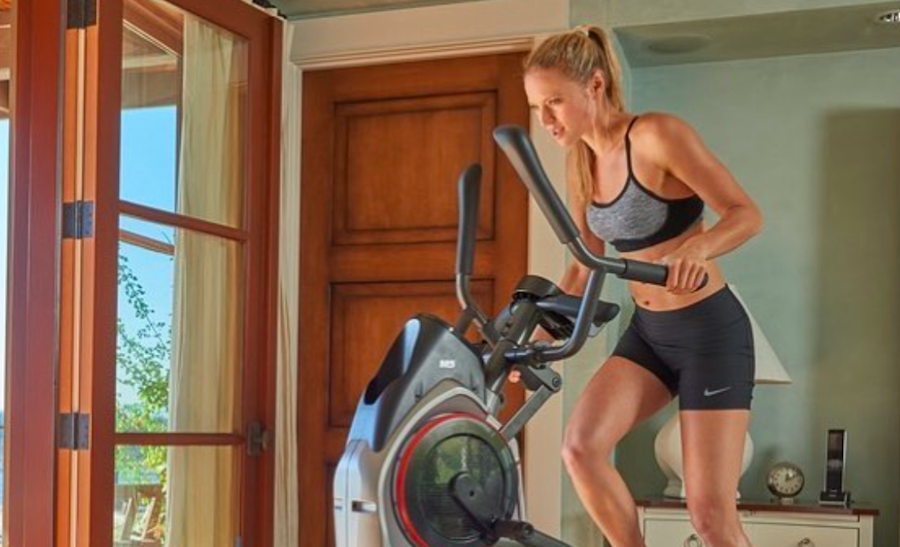Shares of Nautilus tumbled on Tuesday after the fitness equipment supplier reported second-quarter results that exceeded Wall Street’s targets, but lowered its guidance for the year due to weakness in its Direct business.
On Tuesday, shares of Nautilus closed at $13, down $3.30, or 20.3 percent.
On a conference call with analysts, Bruce Cazenave, CEO, noted that since early in the year, management has communicated that it expected a slow first half followed by stronger growth in the back half. Double-digit revenue growth was seen in the second half, with Retail growth skewed heavier in the third quarter and Direct growth coming more so in the core fourth quarter holiday season.
“The good news is, we achieved top line growth of 16 percent in the third quarter in the Retail segment, driven by strong sell-in and placement of new products into our organic retail channel,” said Cazenave.
Despite a “very challenging overall market environment,” Nautilus continued to gain market share with traditional and e-commerce customers and is expecting its recently introduced new Octane-branded products will help drive growth in its commercial and specialty retail locations in the rest of the year as well.
“On the Direct side of our business, however, we are taking a more conservative outlook based on several factors that emerged during the third quarter,” added Cazenave.
First, a market test showed that its HVT product will have a “more deliberate growth trajectory” and the company has “modified” its near-term expectations for growth on the launch.
Second, media efficiency metrics “remain challenged,” partially due to HVT awareness building efforts, but also underperformed overall in the third quarter. Finally, Nautilus expects continued declines in TreadClimber sales for a few more quarters to pressure Direct’s sales and margins. Added Cazenave, “While these product and media dynamics can change once we enter the peak season in late November, just as they have done in the past, we feel level-setting expectations for lower than previously guided year-over-year growth rate for our Direct business in Q4 is prudent at this time.”
As a result, Nautilus now expects to achieve revenues of $405 million to $410 million for the year, which is roughly flat to prior year. The company is projecting operating income for the full year of $44 million to $46 million, a 13 percent to 18 percent decrease over prior year.
When it reported second-quarter results on July 31, the company reiterated its 2017 full year guidance of 5 percent to 7 percent growth in revenues and operating income.
Cazenave said the lowered guidance also reflects additional investments to support strategic growth areas and to create momentum for HVT.
Regarding its Retail segment, Cazenave said he remains “cautiously optimistic” with its broader product offering and strong placements. But since the timing of sell-ins occurred primarily in the third quarter this year, the growth rate at Retail is expected to moderate in in fourth quarter versus the third.
In the third quarter, net earnings roe 8.5 percent to $8.2 million, or 27 cents a share, exceeding Wall Street’s consensus of 24 cents.
Total revenue increased 9 percent to $88.1 million, missing Wall Street’s consensus target by $3.7 million.
Companywide gross margins decreased 160 basis points to 46.9 percent primarily due to a shift in segment revenue mix from Direct to Retail. Operating expenses were down 9.9 percent to $28 million due to lower finance fees related to a contract extension with a financing partner that provided a retroactive adjustment, coupled with ongoing lower costs in the Direct segment and a $1 million favorable settlement related to an indemnification claim.
Retail segment sales increased 15.8 percent to $53.5 million, reflecting strong seasonal sell-in with key traditional and e-commerce partners, partially offset by weakness in specialty and commercial customers.
Operating income for the Retail segment rose 31.5 percent to $12.1 million. The profit increase was primarily due to the higher net sales and gross margins, coupled with the receipt of a $1.5 million settlement related to an indemnification claim, $1 million of which was recorded against sales and marketing expense and the balance in cost of sales. Retail gross margins grew to 35.7 percent compared to 35.1 percent, reflecting favorable absorption of fixed costs over the increased sales and the indemnification claim.
Direct segment sales inched up 0.8 percent to $34 million as sales growth of new products, including the Bowflex and HVT, was offset the expected decline in TreadClimber sales.
Operating profit doubled to $5.3 million compared to $2.6 million a year ago. Operating income was positively impacted by a decline in financing fees resulting from a retroactive contract renegotiation adjustment. Gross margin for the Direct business declined 220 basis points due to unfavorable product mix and increased discounting for older products.
Cazenave added that while its updated outlook is “clearly disappointing,” the company expects its stepped-up cadence of new products launching this year and those coming in 2018 across all channels of distribution.
“Importantly, our fundamental strategy centered around continuing to invest in new product innovation, building brands, channel diversification and achieving additional market access points remains intact and we intend to stay the course while adapting tactics as necessary,” he added. “The company is in a strong position, both in the marketplace and financially, to take advantage of growth opportunities that we can create or that are presented to us, including whether they be organic or through acquisition of new assets.
“As is always our standard operating mode, we move simultaneously along parallel past of strengthening the core business and processes while exploring worthy, incremental growth opportunities that fit our strategic initiatives.”
Photo courtesy Bowflex
















